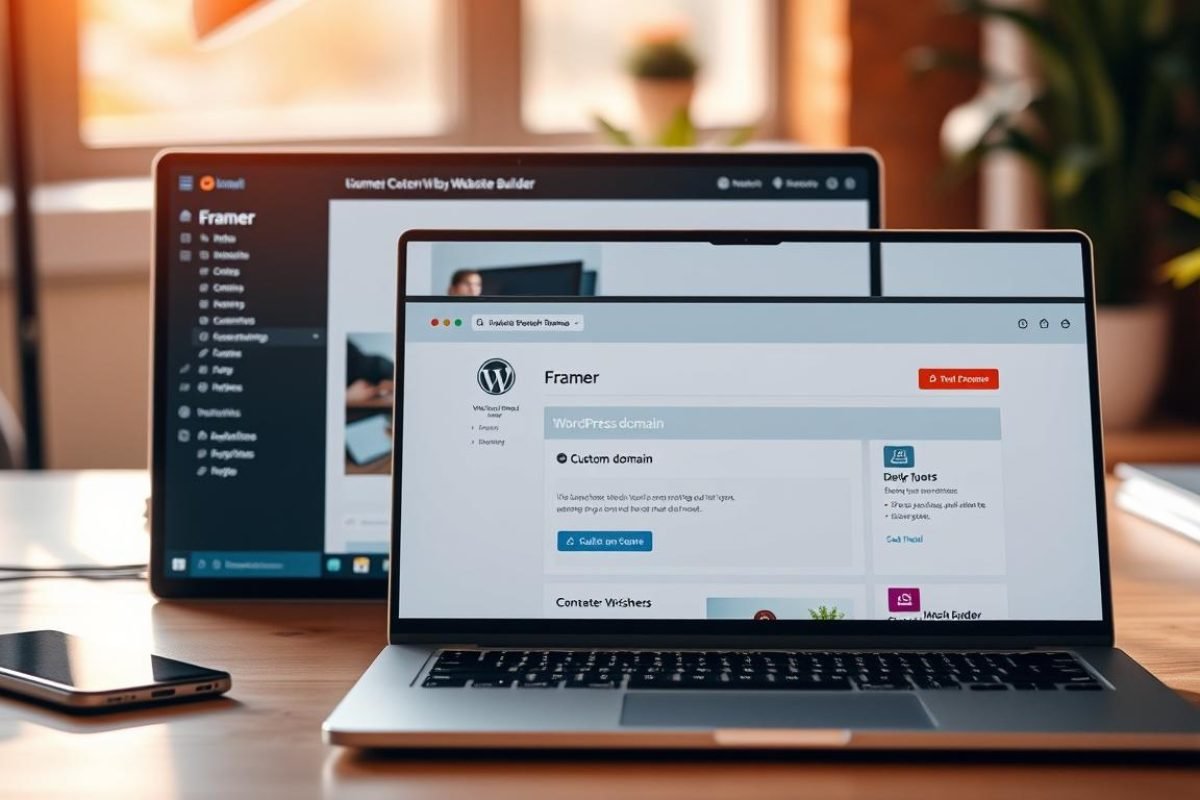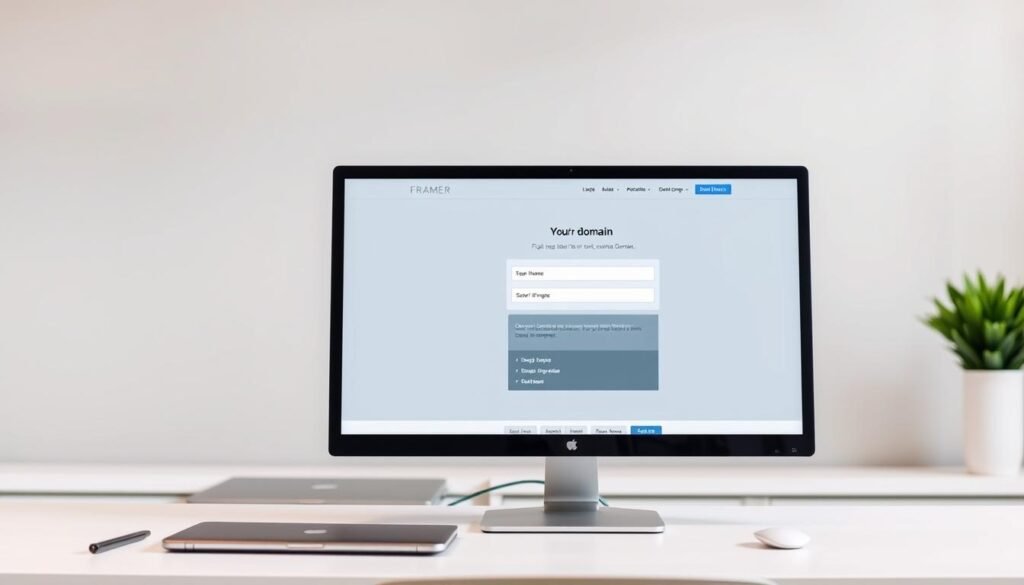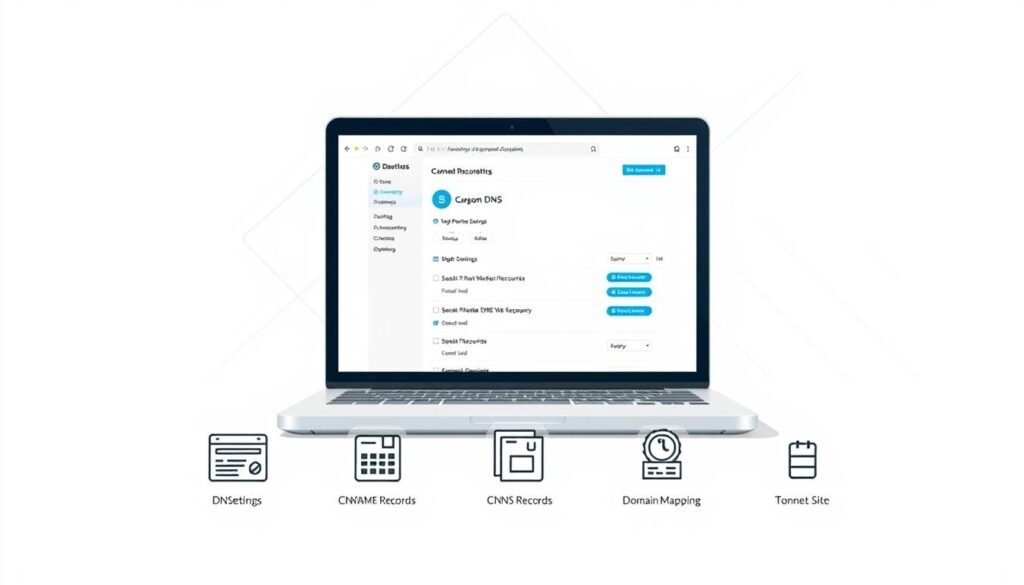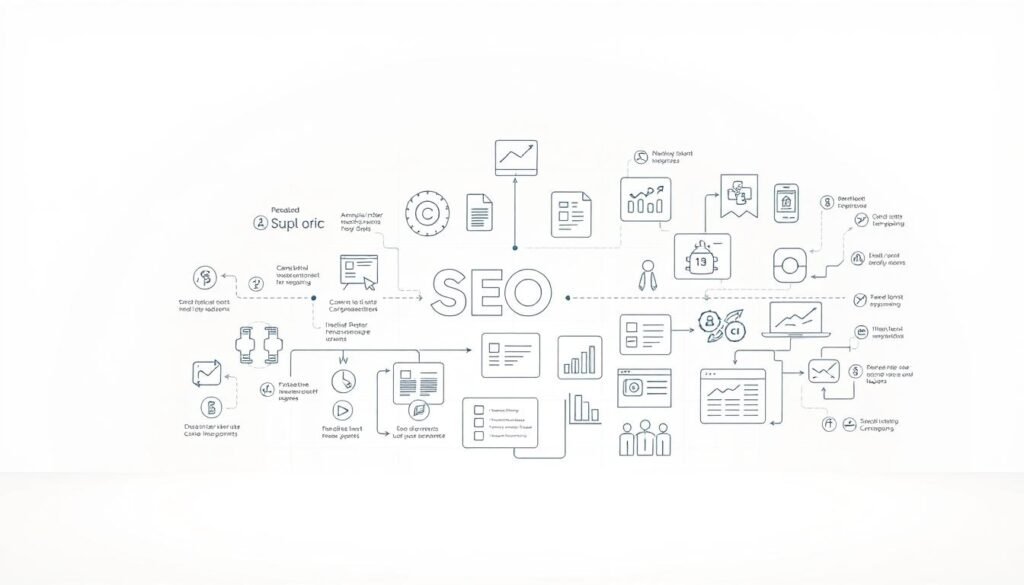What if your WordPress site could thrive on Framer’s sleek hosting without losing its identity? Many assume blending platforms requires sacrificing functionality or design freedom. But with strategic domain integration, you unlock a hybrid solution that preserves your content while elevating performance.
Framer’s hosting infrastructure offers modern speed and reliability, while WordPress remains a powerhouse for content management. Merging these systems through DNS configuration creates a seamless experience for visitors. This approach bypasses the limitations of default subdomains, giving your site a polished, branded edge.
Before diving in, ensure your Framer project is live and your domain registration details are accessible. The process involves updating DNS records to point to Framer’s servers. Choose between automated subdomains or manual third-party setups based on your technical comfort.
Table of Contents
ToggleKey Takeaways
- Maintain WordPress content while using Framer’s optimized hosting environment
- Custom domains boost credibility and search engine visibility compared to generic URLs
- Required materials include a published Framer project and registered domain name
- Two configuration paths: automated Framer subdomains or manual DNS adjustments
- DNS changes typically propagate within 48 hours after implementation
Introduction to Connecting WordPress with a Framer Custom Domain
Bridging content management systems with modern hosting solutions creates opportunities for enhanced digital experiences. Framer’s platform offers a unique blend of design-centric tools and hosting flexibility, allowing brands to maintain their WordPress content while leveraging faster load times and sleek presentation.
Overview of Framer and Custom Domains
Framer provides two domain options: automated subdomains (e.g., yourbrand.framer.website) and custom third-party domains. While free subdomains work for testing, professional projects demand branded URLs. Manual DNS adjustments enable this upgrade, replacing generic addresses with memorable names like yourbrand.com.
Benefits of Linking WordPress with a Framer Site
Custom domains elevate credibility, making visitors 43% more likely to trust a site. They also streamline marketing efforts—shorter URLs improve click-through rates, and consistent branding strengthens recognition. Technical perks include precise analytics tracking and faster page speeds compared to shared subdomains.
“A branded domain acts as your digital storefront,” notes a web strategy expert. Unified naming across emails, ads, and social media reinforces authority, while search engines prioritize sites with dedicated domains in rankings.
Understanding DNS Settings and Records for Custom Domains
Mastering domain connections requires precise DNS configuration. These technical elements act as digital signposts directing traffic between platforms. Proper setup ensures visitors reach your content while maintaining security protocols.
Key DNS Records: A, CNAME, AAAA, and CAA
A records form the foundation, linking domains to Framer’s IPv4 addresses: 31.43.160.6 and 31.43.161.6. These numerical labels ensure browsers find the correct servers. Always verify these entries match Framer’s specifications.
CNAME records create aliases for subdomains. Point entries like “www” to sites.framer.app. This redirects traffic without changing core domain settings. Avoid using CNAME for root domains.
AAAA records handle IPv6 addresses, but Framer doesn’t support them. Leaving these blank prevents conflicts. CAA records control SSL certificate authorities. Include both letsencrypt.org and sectigo.com for automated HTTPS setup.
How Framer’s DNS Configuration Works
The platform automatically provisions SSL certificates when DNS records validate. This occurs during initial setup and renewal periods. No manual certificate management required.
Changes typically propagate within hours, though some regions take longer. Clear local DNS cache to test updates faster. Multiple record types work together – A records handle primary routing while CNAME manages subdomains.
Framer’s system continuously monitors configurations. Errors trigger alerts through the project dashboard. Regular checks ensure records remain accurate after domain transfers or hosting changes.
can you connect wordpress as framer custom domain
Linking existing content to modern hosting solutions transforms digital strategy execution. Framer’s infrastructure supports seamless integration with external platforms, enabling teams to preserve their established workflows while accessing upgraded performance features.
Explaining the Connection Process
Start by verifying your Framer project is published and your third-party domain registration is active. Major registrars like Namecheap or Cloudflare provide straightforward DNS management interfaces for this purpose.
Navigate to the Domains tab within your Framer site settings. Select the option to link an external domain, then input your registered URL. The platform generates unique DNS values required for routing traffic.
- Replace outdated A records with Framer’s designated IP addresses
- Configure CNAME entries to align subdomains with Framer’s servers
- Remove conflicting MX or TXT records affecting email or security protocols
Propagation times vary across providers, but most updates complete within 24-48 hours. Monitor connection status through Framer’s dashboard indicators. Successful validation triggers automatic SSL encryption, securing data transfers between visitors and your hosted content.
“Platform integrations demand precision, not complexity. Follow system-generated instructions exactly to avoid misconfigurations.”
Step-by-Step Guide to Configuring DNS and CNAME Records
Proper domain configuration bridges your existing web presence with modern hosting capabilities. This walkthrough simplifies technical processes into actionable steps for smooth implementation.
Accessing Your Domain Provider’s DNS Settings
Log into your domain registrar account and locate the DNS management area. Popular platforms like NameCheap and GoDaddy label this section differently—look for terms like “Advanced DNS” or “Zone Editor.”
Setting Up A Records and CNAME for Framer
For root domains (example.com):
- Create two A records pointing @ to 31.43.160.6 and 31.43.161.6
- Add one CNAME entry: www → sites.framer.app
Remove conflicting AAAA records that might disrupt connections. Save changes and allow 48 hours for global propagation.
Guidelines for Subdomains and Redirects
Subdomains like blog.example.com require single CNAME records pointing to sites.framer.app. Avoid mixing record types—use either A or CNAME, not both. Cloudflare users should disable proxy status during setup.
“Accurate DNS configuration acts as your site’s GPS—one wrong turn delays the entire journey.”
Verify changes using tools like DNS Checker or WhatsMyDNS. Successful setup triggers automatic HTTPS activation through Framer’s system.
Troubleshooting Common DNS Issues and Configuration Errors
Domain configuration challenges often surface when merging platforms. While Framer simplifies hosting, DNS errors can temporarily disrupt connections. This guide tackles frequent obstacles and their solutions.
Identifying and Resolving DNS Caching Issues
Propagation delays frustrate many users. Changes might take 24-48 hours to reflect globally. Lower your TTL (Time to Live) settings to 1 hour before making updates—this speeds future modifications.
Use DNS lookup tools to verify global propagation. If some regions show outdated records, wait 3 hours and refresh. Avoid repeated changes during this period—multiple updates reset the propagation clock.
Managing Proxy Settings and Conflicting Records
Cloudflare users often encounter proxy conflicts. Set records to “DNS only” mode instead of “Proxied”. This ensures direct communication with Framer’s servers without intermediary filters.
Remove registrar-added parking records—these create duplicate A records. Delete any AAAA entries pointing to IPv6 addresses, as Framer doesn’t support them. Check MX and TXT records for email service conflicts.
“Always test configurations with dig or nslookup commands before declaring failure.”
For limited DNS providers like GoDaddy, consider transferring domains to services with full record control. Most issues resolve through systematic checks—update one record type at a time and validate changes before proceeding.
Conclusion
Modern web architecture thrives when combining flexible content systems with optimized hosting. By completing this integration, your digital presence gains Framer’s speed advantages while preserving existing workflows. The setup transforms how visitors experience your brand through polished URLs and enhanced performance.
DNS configuration mastery becomes second nature after implementing A records and CNAME entries. Most domain providers simplify this process through intuitive dashboards, though technical nuances vary. Remember: SSL certificates activate automatically once records validate, securing data transfers without manual intervention.
Should configuration challenges emerge, Framer’s support team assists through their contact portal. Common fixes involve verifying IP addresses (31.43.160.6/31.43.161.6) or adjusting subdomain pointers. Multiple projects benefit from repeating this process—scale your setup as needed while maintaining consistent branding.
Your upgraded framework merges WordPress content control with enterprise-grade hosting. This hybrid approach eliminates compromises between design flexibility and technical performance. Future updates become streamlined through mastered DNS management and propagation timing awareness.












